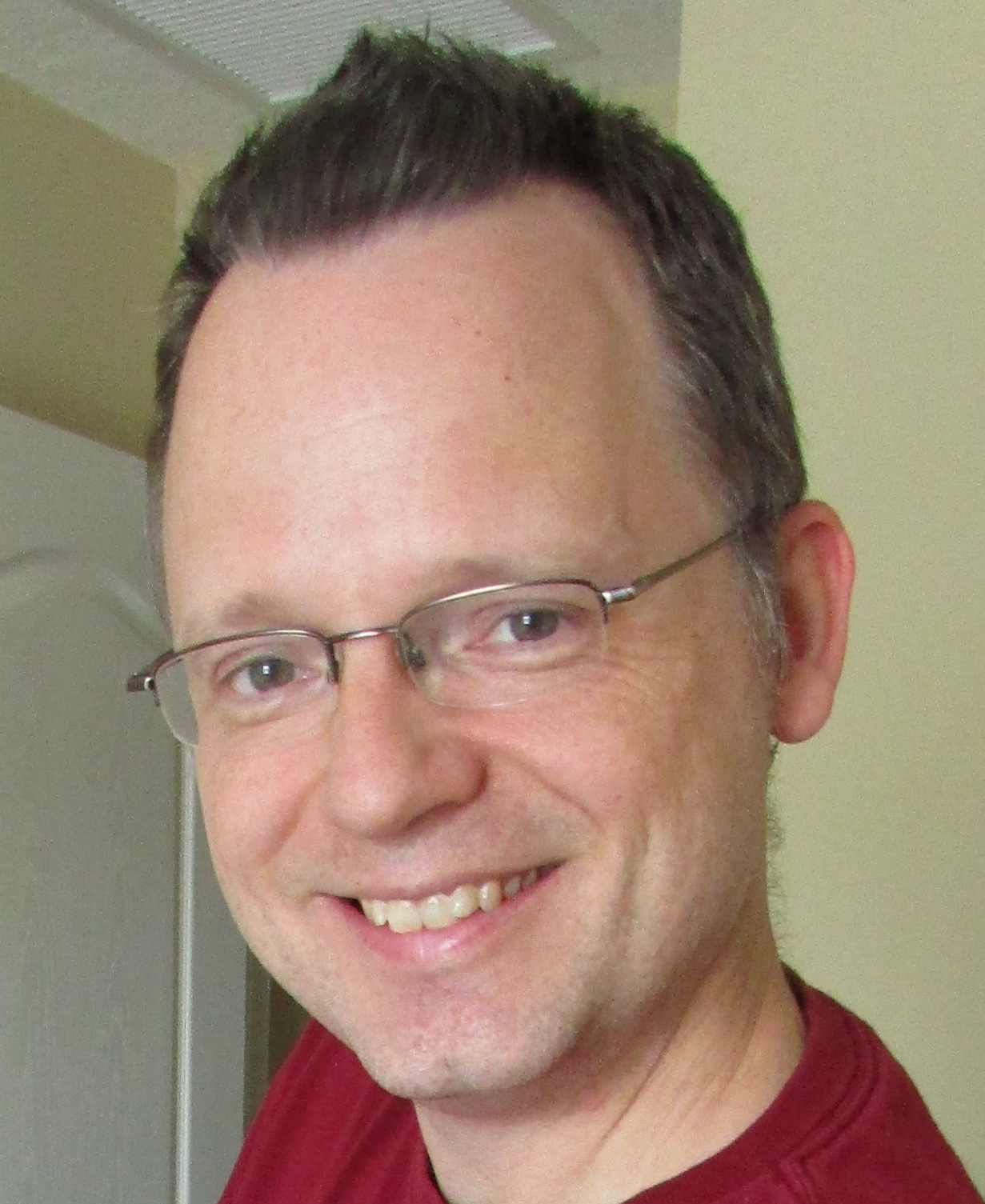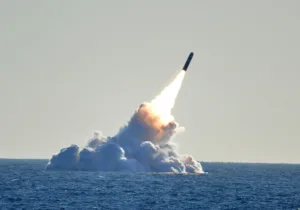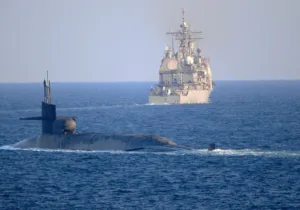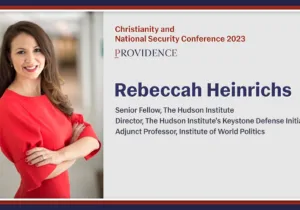Everyone who reads this article would rather not live in a world of nuclear weapons if given the choice. That choice, unfortunately, is not ours to make. Everyone with a Christian conscience and many besides agree that living without the threat of nuclear terror is preferable, all things considered. Yet, when thinking as a realist, the first thing to conclude is that wishful thinking does not count for much.
Most people feel no personal compulsion to build a nuclear weapon. Our pacific circumstances, however, are not the same as those experienced by men like Einstein, Leo Szilard, Robert Oppenheimer, President Roosevelt, and the others who ultimately got the Manhattan Project rolling. Fear of a Nazi atomic bomb, and the possibility that brilliant minds like Heisenberg’s were developing it for the Nazis, prompted Einstein (an ardent pacifist) and Szilard to write to FDR to commence the project to pre-empt the Nazi threat. Hence, the first atomic bomb was made under wartime duress, by men under pressures wholly unlike our own. As has been argued previously, once an invention is made, it is basically impossible to “unmake” as the theoretical expertise will always be there to reinvent it. Hence, even if all nukes worldwide were abandoned, the likelihood that a future country or set of individuals would again remake them is almost certain.
So, we are living in a nuclear world, and we must decide what to do about it. Pacifists are not the only ones who lament this. Anyone who possesses a beating heart and a compassionate mind wishes it were not so, but the realist admits that it is and tries to deal with reality. What do we do? Some of the old choices, which have been made in prior agreements such as Salt I and II, Start I and II, and the Nuclear Non-Proliferation Treaty of 1968, contributed good limits and reductions in nuclear stockpiles. With the Ukrainian war however, and Putin’s withdrawal from prior treaties as he develops the “Satan II” (RS-28 Sarmat) so that he may replace the aging SS-18 “Satan I” missile, the climate for nuclear arms control is grave.
CTF as Alternative to MAD
Mutually Assured Destruction is a scary policy. If the Soviets possessed enough nuclear weapons to deter our strike and vice-versa, no strike would happen. Both countries would be too terrified. That was the Cold War threat. The Cold War didn’t exactly end, however. One part of it, the ideological grind between American Capitalism and Soviet Russian Communism ended, as the latter melted away into just Russia. Large parts of it remain, however, as we must ask if Russia and China share the commitment not only to free markets, but to democracy and freedom of religion. For as long as these nations harbor serious ideological doubt about the American way of life, then the logic of mutually assured destruction is still going to be out there.
Matthew Kroenig has pointed out, however, that the United States has a much more benevolent and ethical idea for the use of nuclear weapons. Following the doctrines of Just War Theory, he has skillfully argued that Counter-Force Targeting (CTF) of the enemies’ nuclear threat, current U.S. Policy, is a more moral course of action. Instead of targeting population centers, it offers the strategic advantage of trying to annihilate the threat of opposing nuclear weapons by targeting ICBM silos and weapons centers. Given the unmitigated destruction of nuclear weapons, there is huge risk to civilian populations as well, but the targets of CTF strikes are not people, they are military objectives. In a world where not everyone can be counted on as an ally, CTF targeting seems inevitable. But whether we adopt CTF or MAD, we regrettably must live with the nuclear threat, and manage it responsibly, because of the result of two simple propositions: A) we cannot “uninvent” and dispose of all nuclear weapons permanently, and B) those powers which possess them must therefore manage them responsibly and protectively.
Non-Proliferation a Must
Given all that has been said above, the pledge to limit the number of powers which possess nuclear powers still follows. Realists know that the political benevolence which reigns in any given country is likely to wax and wane over time, and that under certain circumstances can become exceedingly thin. We certainly do not want to multiply the number of powers responsible for carrying nuclear weapons, given humanity’s long record of sinfulness and war. Even in this, however, one might wonder if the 1968 Nuclear Non-Proliferation Treaty was a success. With at least nine nuclear powers today, the number of warhead-possessing countries since that treaty has almost doubled. There are estimates of over 13,000 nuclear warheads in the arsenals of these countries today. Each one could virtually wipe out a major population center, and there are far less than 1000 cities on Earth with 1 million or more people. This math tells us all-out nuclear Armageddon is grim possibility.
To Modernize, or Aggrandize?
We all know that machines do not sit well forever. Parts must be serviced or replaced; deterioration takes its toll. The first Russian SS-18 models (with only latter models still active) entered service as far back as the 1960s, as did the U.S. Minuteman missiles. The SS-18 has ten “MIRV,” or multiple retargetable re-entry vehicle (i.e. warheads), each one more devastating than the Hiroshima Bomb. Yet the SS-18 or “Satan I” might be replaced by a “Satan II” which Putin has been in testing and developing. In the Reagan era the MX “Peacekeeper” missile was deployed. It possessed 10 warheads like the SS-18 and a comparable nuclear punch. It was retired by START 2 reductions, and replaced with the Minuteman III (with three warheads) which had been in service as far back as 1970. It is scheduled to be replaced in approximately 450 silos by weapons such as the Sentinel ICBM. The point of these facts is that countries will always be measuring their arsenals by their age and the threat that they pose to their rivals. Hence, our arms budgets and aims will always fight an innate human tendency to aggrandize our power and its threat to others. In the inevitable need to modernize aging weapons systems there will always be the possibility of unbalancing the precarious status quo.
Arguably the status quo keeps an uneasy peace, whereby great powers are deterred from waging all-out wars. Nuclear weapons reduce the risk of all-out warfare but cannot eradicate war altogether. This is why conventional armies and arms still have a use. Humans fight and struggle, as our worldviews and loyalties are in the grander scheme of things misaligned and conflicting. The unintended blessing of the nuclear curse is the limit on this human aggression. So, we will continue to design, and tinker, revise and improve, but hopefully curtail rather than expand these arsenals. Mathematically, the more warheads, the greater their threat of misuse, accidental or intentional.
Ironically, all this is paid for by taxpayers who have no capacity nor inclination to design any of these things. In that measure, realist and pacifist Christians really have no difference. Given the dread of nuclear conflict, we can ponder the ultimate imperative of Jesus Christ’s words: to love our neighbor as ourselves. In a world threatened by the MAD-ness of nuclear war, we see truly divine imperative of those words. The greatest innovative force in our future is not artificial intelligence or genetic discovery, but the power to put love and responsibility in charge of the most fearsome tools we design. It is in the policy and practice of pursuing a just peace that keeps these weapons slumbering in their silos.







 Sponsor a student for Christianity & National Security 2024
Sponsor a student for Christianity & National Security 2024